CANTIL, Calif. — Ever since jumping into the U.S. market in the 1950s with the tagline “You meet the nicest people on a Honda,” the company's corporate image has been one of extreme friendliness. Even as its Si and Type R coupes spawned an army of young brand loyalists other carmakers would’ve killed for, it treated them like a dropout stepson, shunning them to embrace the wholesome, khaki-shod Helpful Honda Dealer. Hell, even their best-selling cars are named for good citizenship and agreement.
That unyielding desire to be congenial was the Achilles’ heel of the current-generation Honda Ridgeline when it debuted in 2017. We had almost unanimous praise for our long-termer’s function and features notwithstanding its gentle mug. It was supposed to be the friendly neighborhood pickup, with a car-like unibody construction and a look that was more conventional than the vaguely avant garde original Ridgeline.
As it turned out, Americans may appreciate a more conventional truck shape, but they also expect them to appear tough. That mostly means have a grille the size and shape of a refrigerator. Despite the raves, the way the self-fulfilling spiral of male insecurity works is that even if you’re fine with it initially, getting repeatedly told that it’s not Marlboro Man enough makes you question whether you want to be seen in one.
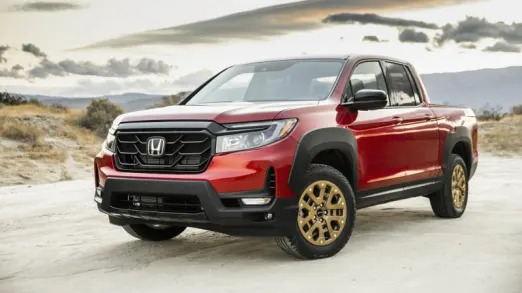
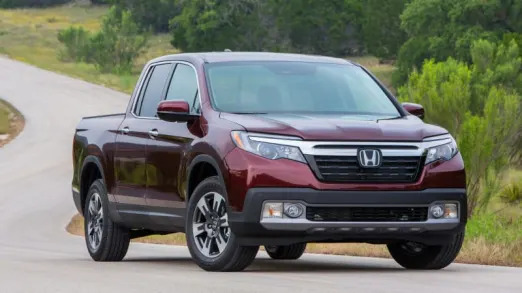
Well, Honda heard the critiques loud and clear. They’ve given the refreshed 2021 Honda Ridgeline the equivalent of calf implants, beefing it up to more confidently declare "truck!" Everything forward of the A-pillars has been remade, the gently curving hood has given way to a tall, upright grille (you can see the difference above between the new design, left, and the previous). The leading edge of the prow is blocky now, and the hood bulges like Schwarzenegger’s pecs. There’s so much frontal surface area that Honda had to add functional side vents in the fascia to maintain the same level of streamlining.
The new rear bumper gets rid of the dainty brightwork and hidden exhaust for a chunky black bench over dual chrome-tipped pipes. Honda worked with Firestone to develop a blockier tread design for the tires. New wheel offsets push them out by 10mm on either side for a wider stance. For their commercial voiceovers, Honda’s even sacked earnest, friendly and totally unthreatening Fred Savage for a manlier spokesman — and his name is John Cena!
Underneath the buff new sheetmetal, the 2021 Ridgeline is the same truck most of our staff fell in love with so hard they considered buying one for themselves. It’s not just us, either. The Ridgeline has been repeatedly called the truck that most truck customers actually need when they buy a brawnier ladder-frame midsize or full-size.
The Ridgeline still drives like a chummy, smooth-riding Honda crossover. By comparison, a Tacoma bounces around like a Baja trophy truck. But that’s not to say the Ridgeline’s as detached and soft as — just to pick a random crossover — a Honda Pilot. Despite the visual resemblance, it isn’t just a Pilot with the back chopped off. The Ridgeline employs a different body structure with a truss-style inner construction aft of the cab and has a more robust suspension. As a result, it steers more responsively and scrubs a significant amount of body roll and pitch.
In any mode but Sport, the throttle response lags. Stomp on the pedal for a highway merge and the 280-horsepower V6 seems to ask, “Are you sure you want to do this? Yeah? Well, OK, then,” before giving you the whole bag of beans. On the other hand, Sport is so sporty that it’ll definitely eat into your precious fuel economy of 18 mpg city, 24 mpg highway and 21 mpg combined. It would be nice to nudge the drive settings map closer towards Sport, and make Eco Mode the real fuel sipper.
We tested the 2021 Ridgeline’s off-road prowess at Honda’s proving grounds in the Mojave Desert. While it won’t take on serious rock crawls, functions like hill-hold assist as well as Mud and Sand drive modes are good enough for light off-road duty. Like many of its other truck functions, from its ability to take on cargo to its 5,000-pound towing capacity, it’s sufficient for the majority of pickup customers.

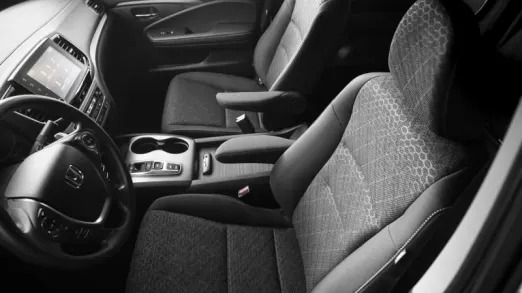
The interior is where I diverge from my Michigan colleagues’ Ridgeline love-fest. Their fancy backs got treated to the lumbar support and power adjustments found in RTL trims and above, whereas my poor spine just sank into the new-for-2021 cloth inserts found in the base trim Sport. Even a two-hour trip was a tad fatiguing.
Also, for 2021, the Ridgeline’s infotainment interface has been updated, and Honda is quick to shout from mountaintops about the return of the volume knob. That's certainly not a bad thing, but the Ridgeline still doesn't have Honda's latest infotainment system, found only in the Accord and Odyssey, that includes an updated touchscreen UI, physical menu buttons (versus touch-sensitive ones) and quicker responses. The system instead suffers from the same convoluted menu structure, too-small buttons and, worst of all, inconsistent responses similar to those we noted in our CR-V infotainment review.
The general interior design remains the same, but the refresh brings some visual pleasantries to the cabin, like new colors, accent trim and contrast stitching. RTL-E and up get wireless charging, and since last year all trims have offered Apple CarPlay and Android Auto. We still dig the trick 40/60 split rear bench that affords storage beneath, or folds up for larger cargo.
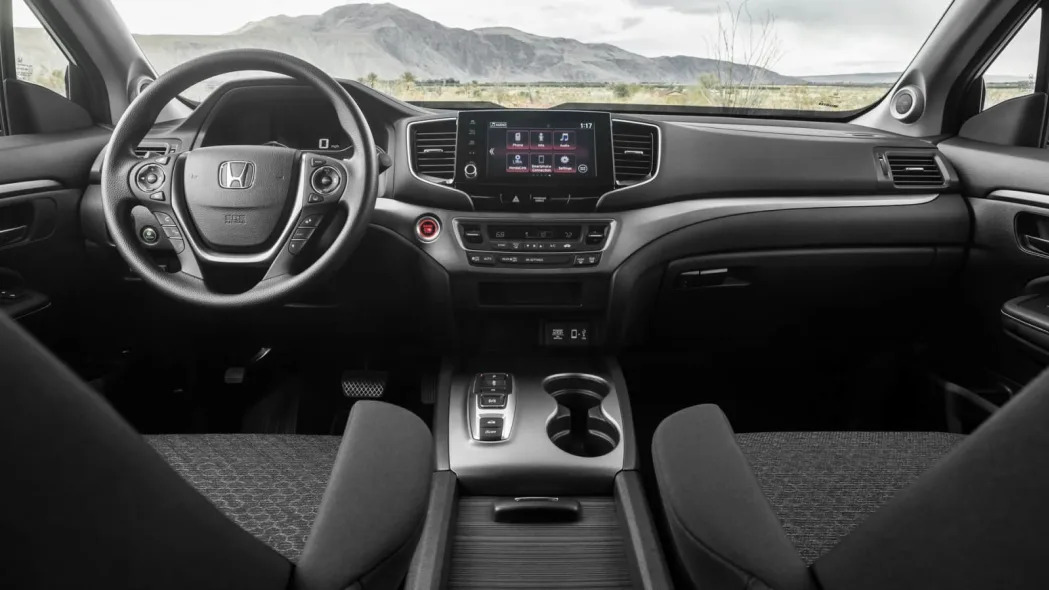
Speaking of cargo, the bed continues to be one of the Ridgeline’s best features. We appreciate the lockable under-bed trunk for weatherproof storage. A drain plug adds more uses, like filling it with ice for a tailgate party or fishing trip. The spare tire is located there too and if you get a flat while the bed’s full it’ll be an inconvenience, but it’s no different than most cars if the trunk is packed. The top RTL-E and Black Edition trims still feature an in-bed power outlet and Bluetooth audio system that turns the bed into a giant speaker.
Nearly nonexistent wheel well humps are a boon for loading and hauling. The Ridgeline is the only midsize pickup that can carry a standard 4x8 piece of plywood flat. It’s also sized perfectly for a Honda ATV or pair of dirtbikes. Although, we discovered a flaw while hauling a 1982 Passport C70. Because of the bed's less-than-vast 5.3-foot length, the tailgate had to be lowered to make the bike fit. That meant the back-up camera, located by the handle, is pointed to the ground. Although other trucks have that same camera location, their longer beds, whether standard or optional, make it more likely that what you're hauling will be able to fit with the tailgate closed.
On the other hand, the dual-mode tailgate design is brilliant, and since last year it locks remotely as well. Its opening arc has a couple of intermediate stop notches, but we found that it has a tendency to swing shut unless the truck’s parked on a nearly flat surface. Still, the ability to open to the side means you don’t have to drag heavy cargo over it, and you can easily sweep loose loads like mulch or gravel right off the bed’s edge.
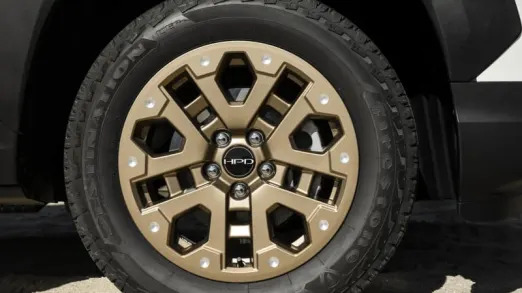

In 2020, Honda eliminated the base RT trim, making Sport the entry-level buy-in. This year, the front-wheel-drive version has been dropped, meaning all Ridgelines now come with Honda’s torque-vectoring i-VTM all-wheel-drive system as standard. That also means the base price goes up, to $37,665 including the $1,175 destination charge.
Even compared to last year’s Sport AWD, the price gets bumped by $430 for the other minor changes. That’s still a relatively high starting point among midsizers, though it starts to level out when you consider that a V6, nine-speed auto, crew cab, AWD and the Honda Sensing suite of accident avoidance and driver assistance systems come standard.
To grab a few more customers, Honda has introduced for 2021 a $2,800 HPD Package on all trims. Named after Honda Performance Development, the outfit that builds Civic TCR race cars, Type R crate motors, and IndyCar twin-turbo V6 engines, the kit adds fender flares, snazzy 18-inch gold alloys, and the almighty bedside decals. While it doesn’t add any actual performance, do not underestimate the power of a truck with a big acronym sticker. We got a couple of enthusiastic “HPD! What is that!?” queries during our time with our press loaner, but you don’t have to take our word for it. Honda sold out its initial HPD package allotment in 30 minutes.
The HPD Package is a dipped toe into the (lucrative) realm of off-road performance. Toyota has had tremendous success with TRD-branded lift kits and such, but it was too late in the Ridgeline’s development cycle to mess around with the suspension. Honda says it develops vehicles holistically, and while it could’ve slapped on some springs, the rest of the truck wouldn’t have performed to Honda’s standards. Given the response to what amounts to a simple appearance package, we expect to see HPD hardware in the next generation. We’ve seen what Honda can do elsewhere in its empire with powersports off-road vehicles like the Talon. If they can give the Ridgeline a true performance package, then it'll be easier to believe that Honda has truly committed to casting off its friendly image for the Ridgeline. Either that, or give the Helpful Honda Dealer a black belt and a face tattoo.
Related video:
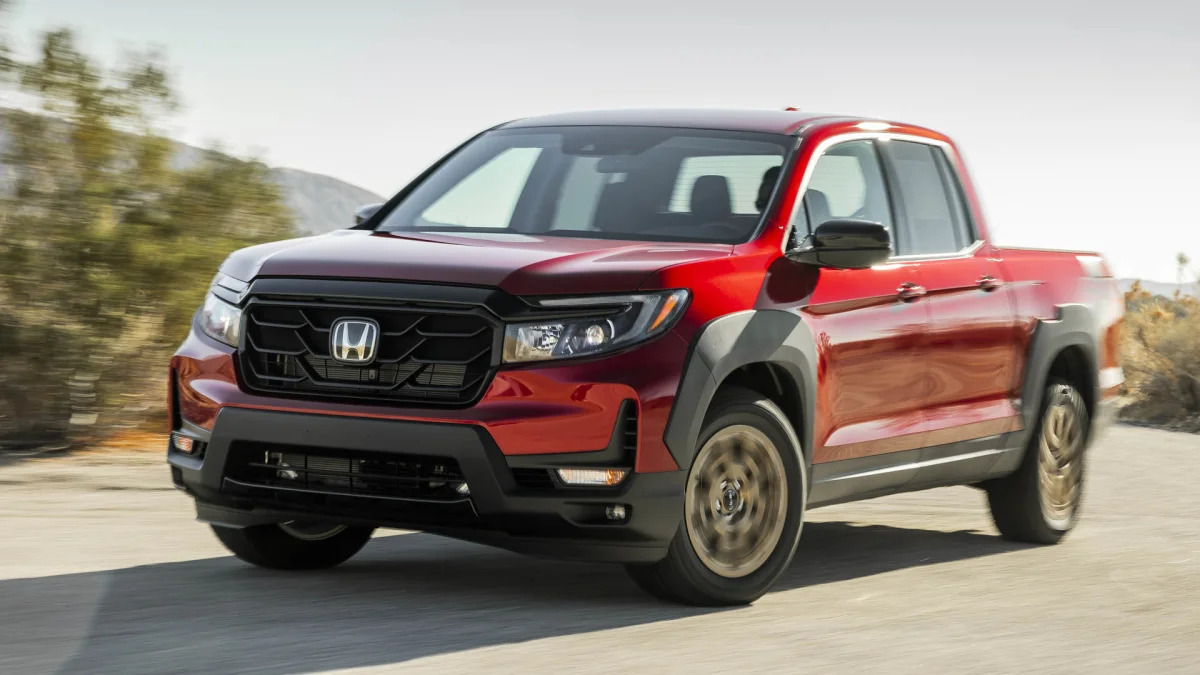









Sign in to post
Please sign in to leave a comment.
Continue